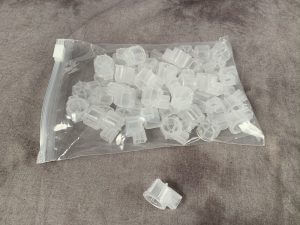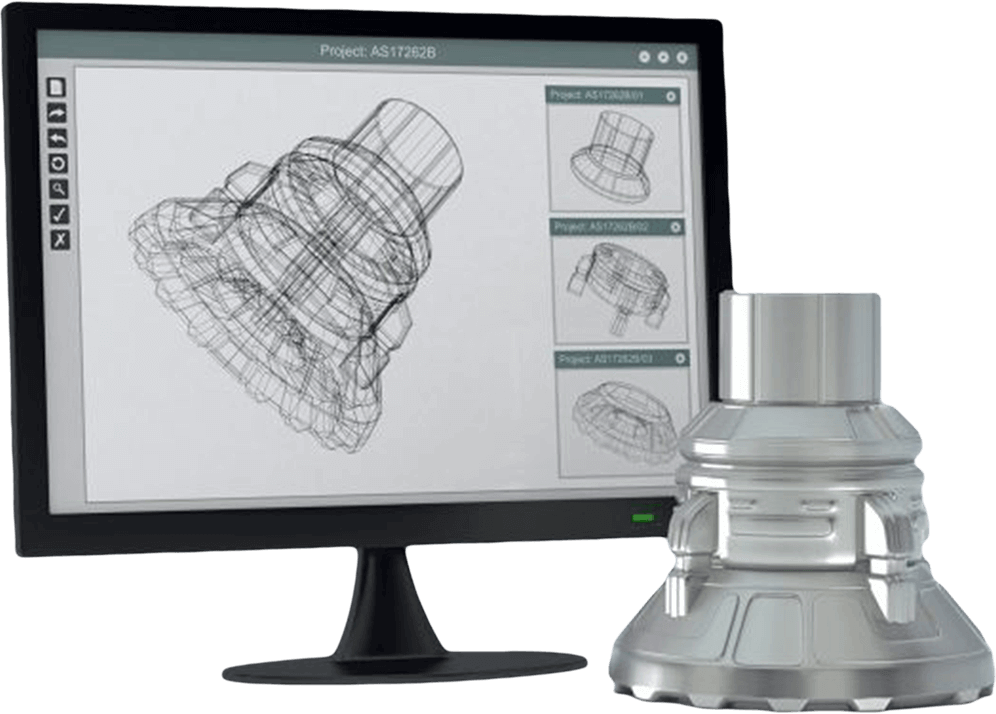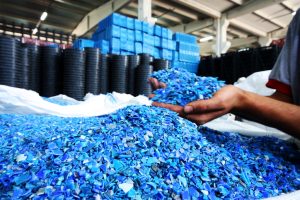Month: September 2020
Improve Your Medical Injection Molding Validation Process
The procedure for validating the medical injection molding process is critical to verify that the system offers repeatability, assurance of accuracy, and a high degree of quality. It’s important to receive validation for medical injection molding so it’s consistent and traceable. To meet these requirements, manufacturers use a three-step validation process described as:
- Installation Qualification (IQ)
- Operation Qualification (OQ)
- Performance Qualification (PQ).
These procedures help qualify Tooling, Materials, Equipment, Systems and Processes. The goal is to validate that the entire life cycle of the medical injection molding process is repeatable and traceable with a high confidence level that the quality repeats from lot to lot and year to year.
The Medical Injection Molding Process
There are four major variables that control the process: melt temperature, fill speed, pack pressure and cooling rate.
- Melt Temperature: The temperature at which the polymer will begin to melt
- Fill Speed: The time it takes to fill the mold with polymer
- Pack Pressure: The pressure applied to the melt to pack in the polymer and to force more of it into the mold
- Cooling Rate: When there is no more pressure being applied, how long it takes for the melted polymer to cool
Three of the variables are easy to duplicate from run to run. However, measuring melt temperature has always been a mystery, as it is difficult to measure accurately. Molders agree that melt temperature measurement remains one of the “last frontiers” of medical injection molding process control.
“You can’t control what you can’t measure” is a fundamental axiom, and the problem here is the lack of an accurate, repeatable, practical, and generally accepted method of measuring the melt temperature.
Why is it important to control melt temperature?
Melt temperature influences the plastic’s viscosity or resistance to flow (thinness or thickness), which is critical in obtaining optimal part dimensional control. Consistent viscosity allows for repeatable filling of mold with consistent cavity pressure, and less part to part and lot to lot variation. You will get a tighter “bell curve” on dimensional variation.
A revolutionary new system has been in development for the last 4 ½ years called the Melt Temperature Measurement System (MTMS). There are two major principles that define the system.
- An insulated cup is used to keep the purge molten so it can be measured before it solidifies.
- There is a defined flow path in the system that forces the molten material over the thermocouple probe.

A high-speed pyrometer records the peak temperature. It is fast, repeatable and easy to use. Gage R&R studies have been successfully completed.
Start Validating Your Medical Injection Molding
OEM Medical Companies should ask in-house molders and contract molders if they are monitoring and documenting melt temperatures. Contract or custom molders should be monitoring and documenting melt temperature as a Standard Operating Procedure (SOP) to improve your medical injection molding validation process.
Do you know your Melt temperature?

A Guide to Improving Your Plastic Injection Molding

Plastic injection molding is one of the most common manufacturing processes because of its ability to produce identical parts at a rapid rate. Almost every industry has some demand for plastic injection molded parts; a wide variety of consumer products are manufactured by injection molding, which varies greatly in their size, complexity, and application.
The plastic injection molding process requires the use of an injection molding machine, plastic resin pellets, and a mold. The plastic resin pellets are melted in the injection molding machine and then injected into the mold, where it cools and solidifies into the final part.
Our variety of press sizes ranging from 7-500 tons allow us to meet your injection molding needs in both prototype and production volumes ranging from 100 to 1,000,000+ parts. This allows us to produce quality plastic injection molded parts while cutting down time to market.
We offer both overmolding and insert molding, both of which are standard injection molding processes.
Overmolding involves two or more materials molded together to become one part. Most commonly when a substrate is placed into the mold and plastic resin is then overmolded around, over, or through it.
Insert Molding involves a preformed part, such as a metal insert to be inserted in the mold for injected plastic to flow around, over, or through it to result in a single molded plastic piece which has encapsulated the insert.
We’ve put together some commonly asked questions about plastic injection molding, so that you can find out if it is the best process for your product.
Why Choose Plastic Injection Molding?
Injection molded parts offer incredible accuracy and repeatability at a cost-efficient price point. Plastic injection molding is also a very efficient way of producing parts; cycle times can range from a few seconds to a couple of minutes depending on the size of the part and the number of cavities in the mold.
There are numerous materials available that offer different, unique characteristics that fit a wide range of applications. At TenX Manufacturing, we use pelletized resins and as well as any colorants required. The parts can be completely customized with molded-in inserts, custom colors and branded logos. Once plastic injection molded parts are removed from the mold, they are a finished product with the exception of a few post-process steps like sonic welding, UV laser marking/pad printing, or further part assembly.
What is plastic injection molding used for?
Injection molding is used by almost every industry, the majority of plastic products in the world today are injection molded parts. Consumer products like cell phone cases, implantable medical devices, automotive parts, and so many more are examples of how injection molding is integrated into everyday life.
We currently have a shot size range of .152oz – 54oz, so we can produce plastic injection molding parts within these sizes for any industry.
What material are injection molds made of?
There are many factors in determining what kind of mold should be built (prototype, production, single-cavity, or multi-cavity) and most are typically made from aluminum or tool steel.
For building aluminum injection molds, the most commonly used grade of aluminum is 7075; these aluminum molds are typically a great fit for prototype or short-run production. Steel tooling is commonly produced from tool steel in the following grades: P20, H13, A2, D2, and 4140. These steel molds are a great fit for high-volume injection molding or when molded parts are being produced from abrasive material like glass-filled nylon.
Why are injection molds so expensive?
Building an injection mold is a lengthy and potentially expensive process that starts with an understanding of the part that needs to be molded. Potential plastic injection molding problems can be minimized by performing upfront precautions like mold-flow simulations, fill and warp analysis; these measures can highlight potential issues and save time & money down the road.
The block of material, whether aluminum or steel from which the mold will be made, is also a determining factor in the cost of injection tooling. Part geometry and number of cavities will directly correlate to the amount of CNC machine time that is required to make the mold. Parts that have complex geometries (undercuts) that require any additional movement in the tool other than open or close will add to the complexity and cost of the injection mold tool.
How to Optimize the Plastic Injection Molding Process
Optimize the Part Design for Injection Molding
Having a part properly designed for prototype injection molding is critical to achieving manufacturing success. Things to consider include:
- Material
- Wall thickness
- Draft
- Undercuts
- Gates & gate locations
- Part ejection
- Texture
Utilizing software such as Mold-Flow Simulation & Warp Analysis is extremely beneficial and can highlight potential issues prior to building an injection tool.
Understand Common Plastic Injection Molding Part Defects
Understanding the injection molding process as well as the common defects that can happen to injection molded parts:
- Warp
- Flash
- Sink
- Knit lines
- Splay
- Burn marks
- Short shot
- Air voids
- Material degradation
Although some of these defects can happen from improper injection molding processing, properly designed parts and injection mold tooling can minimize these from happening.
Correct Injection Mold Processing
The plastic injection molding cycle occurs by melting plastic resin pellets and injecting the molten material under pressure into a closed metal mold tool. This process is repeated time and time again to produce large quantities of parts at a cost-efficient rate.
- Clamping: The two sides of the mold are closed and clamped shut.
- Injection: The plastic resin pellets are fed into the machine and pushed towards the mold. While this is happening, the material is melted by heat and pressure. The molten plastic is then injected into the mold — this is called the “shot.”
- Cooling: The molten plastic that was injected into the mold is cooled and returns back to a solid state.
- Ejection: Once the part has cooled, it is ejected from the mold.
This is a complex process and it takes numerous pieces of equipment and highly trained individuals to oversee the entire process.
Perfect the Process With a Melt Temperature Measurement System Kit
If you do choose to do your own plastic injection molding, you’ll need to be able to accurately measure melt temperatures. Equipped with accurate measurements, you’ll reduce wasted material and minimize variation from lot to lot, saving you more time and money. TenX offers a Melt Temperature Measurement Kit that helps you eliminate human error in a safe and effective way.
If you’re in need of a prototype or have any additional questions about plastic injection molding or the process, our team at TenX is here to help. Contact our shop and get started on your plastic injection molded part.
